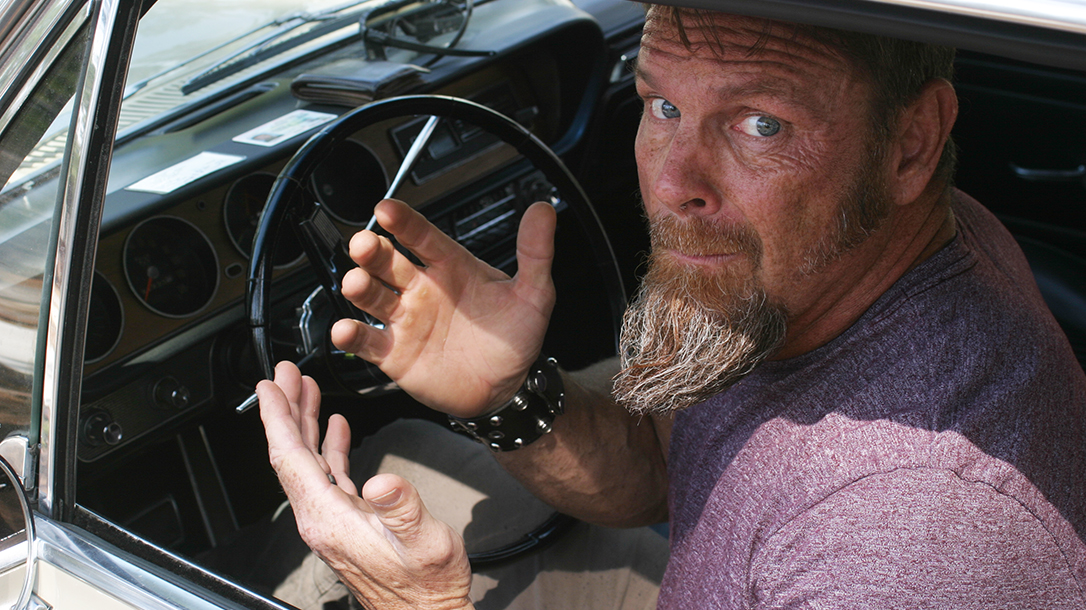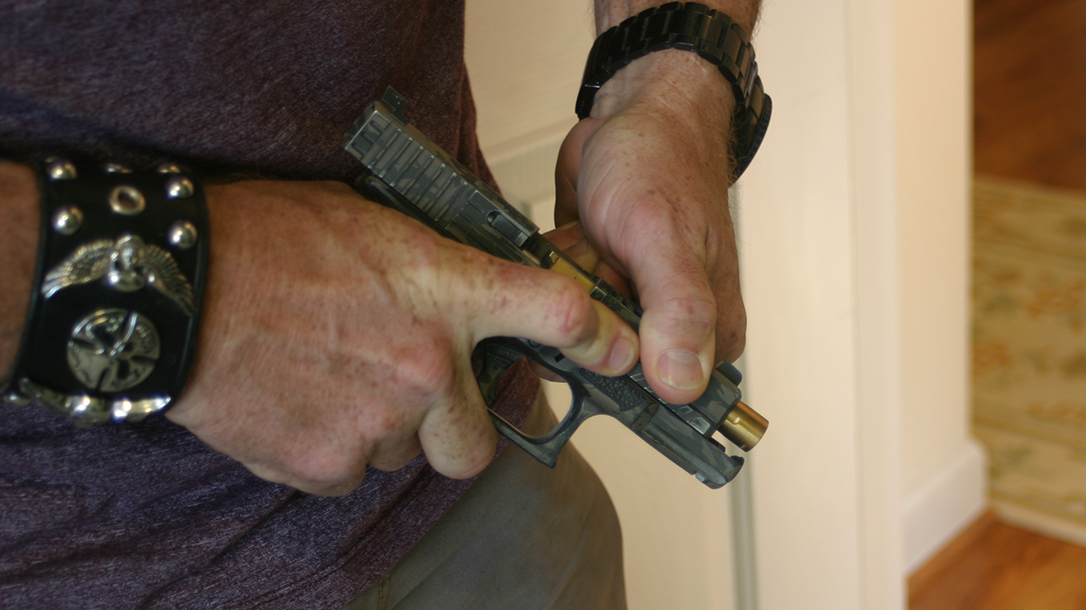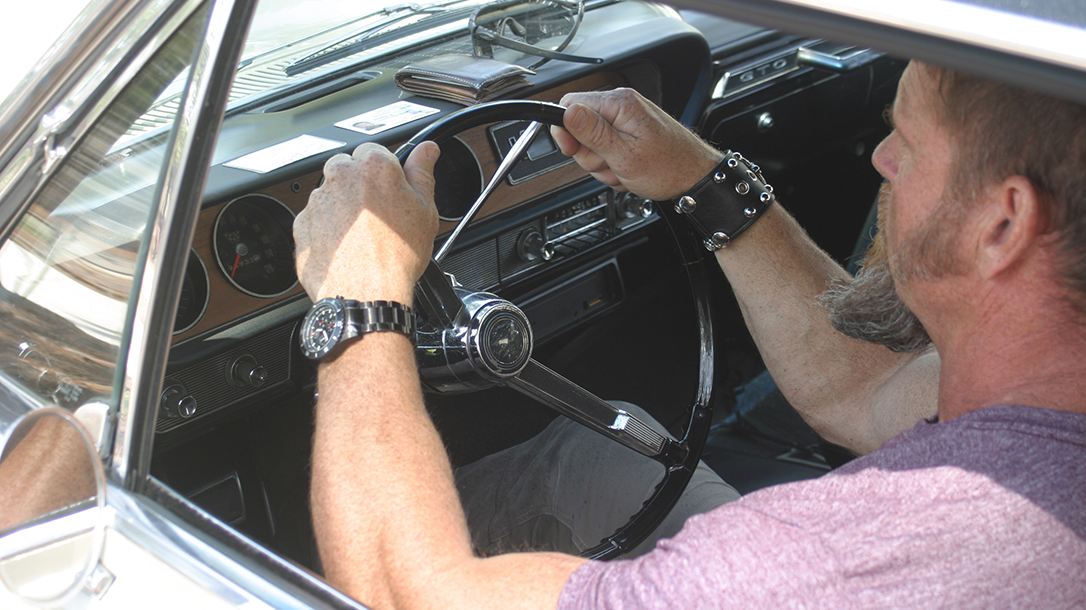As part of range training, we usually conduct a range safety briefing. We all know that there are four rules of gun handling. I use “gun handling” versus “rules of the range” as a method to subliminally manipulate the recipient. One is tactical and one is administrative. The tactical rules appease the administrative requirements of the range.
Understanding that semantics are involved, my No. 1 rule of gun handling is: “You, the individual shooter, must understand the status of your weapon system.” In a gunfight, the weapon does not belong only to you but also to the person you are protecting or the guy who’s “six” you are covering. If your stuff isn’t up and running, you’re messing everything up for those with you. I do not like the phrase “all guns are always loaded.”
Advertisement — Continue Reading Below
Understanding the Press Check
Conducting a press check prevents two things, and both are horrible. One is that we should never hear a click instead of a bang during a gunfight. The other is that we should never have a negligent discharge. Both can be mitigated by knowing your weapon’s status. So, do you know it? The one that is on you? The one that is by your bedside?
My rule is pretty simple: If you are wearing it, it is loaded. If you are not wearing it — meaning you don’t have positive physical control of it — then it is unloaded. So, habitually, when I come home and take my weapon out of my holster, I make sure that I unload it and put that previously chambered round back into the magazine. I then lock the magazine back in place. I am not paranoid, but this gun typically travels with me from room to room as I am working at home.
Press Check: Road Rules
I normally drive with my weapon on me, but occasionally I don’t. For instance, when going to the gym, it may be on the seat next to me, in the open. Once again, no physical control, so therefore, it is unloaded.
Advertisement — Continue Reading Below
If I get pulled over by a cop, I will pull out my driver’s license and CCW permit, and with my hands on the steering wheel, let the officer know that I have a gun in the car that is locked but not loaded. It’s permissible to carry openly in a vehicle in my state. Understand your state laws.
Do you carry a gun in your vehicle? I damn sure do. My other EDC (everyday car) is benign. There are tons of similar makes out there. There are no gun stickers on it (no stickers or decals of any kind, in fact), it’s clean inside, and visibly, there’s nothing in it worth stealing. I do not want to provoke a would-be thief.
Press Check: Saving Others
In addition to knowing the status of your weapon systems, you must know your personal condition. If you can’t save someone else’s life, or can’t keep up with your partner during a foot chase, you are screwing that guy, that kid, that loved one. That life depends on whether you can keep up to ensure they aren’t getting beat up in a dark alley.
Advertisement — Continue Reading Below
You don’t have to be an absolute stallion, but you should put in the effort to better yourself. Make incremental gains every day. The math is simple. Ask yourself, “If I cloned myself yesterday, can I kick my clone’s butt tomorrow?”
I’m not paranoid, but I am also not going to get caught with my pants down when I could have done something to prevent it. We do not plan to fail, but we sometimes fail to plan. When we do, we get experience, and experience is something we get shortly after we need it.
This article is from the July/August 2018 issue of Combat Handguns magazine. Grab your copy at OutdoorGroupStore.com.
Advertisement — Continue Reading Below

























